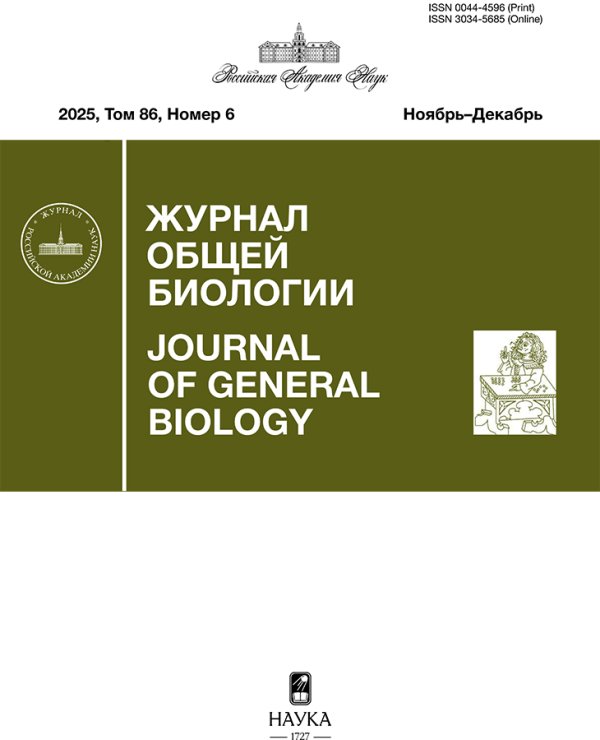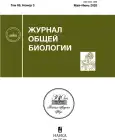Assessment of the invasive potential of boreal crustaceans in the Barents Sea under climate change conditions
- Authors: Bakanev S.V.1
-
Affiliations:
- Polar Branch of FSBSI “VNIRO” (“PINRO” named after N. M. Knipovich)
- Issue: Vol 86, No 3 (2025)
- Pages: 227-238
- Section: (Indexed in “Current Contents”)
- URL: https://bakhtiniada.ru/0044-4596/article/view/306117
- DOI: https://doi.org/10.31857/S0044459625030069
- EDN: https://elibrary.ru/biqznl
- ID: 306117
Cite item
Abstract
The Barents Sea, a critical Arctic ecotone and a vital fishing region, is undergoing rapid climatic transformation. This process includes Atlantification (intensified inflow of Atlantic waters), progressive warming of bottom layers (1.5–2°C over the past 30 years), and a 20–30% reduction in seasonal ice cover. This study investigates the impact of these changes on the invasive potential of boreal commercial crustaceans – the edible crab (Cancer pagurus), Norway lobster (Nephrops norvegicus), and European lobster (Homarus gammarus) – under three climate scenarios (Shared Socio-Economic Pathways: SSP1-1.9, SSP2-4.5, and SSP5-8.5). Using ensemble species distribution modeling (SDM) integrated with Bio-ORACLE oceanographic data and CMIP6 climate projections, we assessed their potential colonization of the Barents Sea by 2100. Results revealed that under current conditions, the species’ ranges on the Barents Sea shelf are limited to narrow coastal zones off northern Norway (1–2 thousand km²). However, under the extreme SSP5-8.5 scenario (projected 3°C bottom temperature rise by 2100), suitable habitats for C. pagurus would expand to 76.3 thousand km², for N. norvegicus to 67.9 thousand km², and for H. gammarus to 8.5 thousand km², predominantly in the southwestern Barents Sea. The range of H. gammarus would remain constrained to 1–2 thousand km², dependent on rocky biotopes (7–12% of the southwestern shelf), while C. pagurus and N. norvegicus would associate with soft sediments (60–70% of the shelf). Competition with the invasive Kamchatka crab (Paralithodes camtschaticus) may create biotic barriers, though its projected northeastward shift toward Kolguyev Island and Novaya Zemlya is expected to reduce pressure on southwestern areas, opening “ecological corridors” for boreal species. Modeling confirmed the critical role of geomorphological factors: fragmented rocky habitats form isolated “ecological islands”, limiting H. gammarus dispersal, whereas extensive soft sediment zones facilitate the expansion of C. pagurus and N. norvegicus. The SDM approach demonstrated acceptable efficacy in predicting range shifts under climatic uncertainty, highlighting its potential value for ecosystem-based management and ecological monitoring in the Barents Sea.
About the authors
S. V. Bakanev
Polar Branch of FSBSI “VNIRO” (“PINRO” named after N. M. Knipovich)
Author for correspondence.
Email: bakanev@pinro.vniro.ru
Akademika Knipovicha St., 6, Murmansk, 183038 Russia
References
- Камчатский краб в Баренцевом море, 2021 / Изд. 3-е, перераб. и доп. М.: ФГБНУ “ВНИРО”. 712 с.
- Кивва К.К., Мурый Г.П., 2021. Изменчивость в распределении промысловых скоплений северо-восточной арктической трески как индикатор атлантификации Баренцева моря // Комплексные исследования Мирового океана: Мат-лы VI Всеросс. науч. конф. молодых ученых. М.: Ин-т океанологии им. П.П. Ширшова РАН. С. 455–456.
- Aiello-Lammens M.E., Boria R.A., Radosavljevic A., Vilela B., Anderson R.P., 2015. spThin: An R package for spatial thinning of species occurrence records for use in ecological niche models // Ecography. V. 38. P. 541–545. https://doi.org/10.1111/ecog.01132
- Assis J., Tyberghein L., Bosch S., et al., 2024. Bio-ORACLE v3.0: Expanding marine data layers for biogeographical modelling // Glob. Ecol. Biogeogr. V. 33. № 4. P. 123–135.
- Bennett D.B., 1995. Factors in the life history of the edible crab (Cancer pagurus L.) that influence modelling and management // ICES Mar. Sci. Symposia. V. 199. P. 89–98.
- Bentley J.W., Serpetti N., Heymans J.J., 2017. Investigating the potential impacts of ocean warming on the Norwegian and Barents Seas ecosystem using a time-dynamic food-web model // Ecol. Model. V. 360. P. 94–107. https://doi.org/10.1016/j.ecolmodel.2017.07.002
- Blum H., 2024. Atlantification: Facing the Atlantic from the Arctic – a provocation // Atlantic Stud. V. 21. № 1. P. 192–194.
- Brattegard T., 2011. Endringer i norsk marin bunnfauna 1997–2010. Utredning for DN2011–8. Trondheim: Direktoratet for naturforvaltning. 110 р.
- Dalpadado P., Ingvaldsen R.B., Stige L.C., et al., 2012. Climate effects on Barents Sea ecosystem dynamics // ICES J. Mar. Sci. V. 69. № 7. P. 1303–1316.
- Drinkwater K.F., Kristiansen T., 2018. A synthesis of the ecosystem responses to the late 20th century cold period in the northern North Atlantic // ICES J. Mar. Sci. V. 75. P. 2325–2341.
- Eyring V., Bony S., Meehl G.A., et al., 2016. Overview of the Coupled Model Intercomparison Project Phase 6 (CMIP6) experimental design and organization // Geo- sci. Model Dev. V. 9. P. 1937–1958.
- Fisher R.A., 1935. The design of experiments. L.: Oliver and Boyd. 252 p.
- Fossheim M., Primicerio R., Johannesen E., et al., 2015. Recent warming leads to a rapid borealization of fish communities in the Arctic // Nat. Clim. Change. V. 5. P. 673–677.
- Frame B., Lawrence J., Ausseil A.-G., Reisinger A., Daigneault A., 2018. Adapting global shared socio-economic pathways for national and local scenarios // Clim. Risk Manag. V. 21. P. 39–51. https://doi.org/10.1016/j.crm.2018.05.001
- Gerland S., Ingvaldsen R., Reigstad M., 2023. Still Arctic? – The changing Barents Sea // Elementa: Sci. Anthropocene. V. 11. https://doi.org/10.1525/elementa.2022.00088
- Guisan A., Thuiller W., Zimmermann N., 2017. Habitat Suitability and Distribution Models: With Applications in R. Cambridge: Cambridge Univ. Press. 462 р. https://doi.org/10.1017/9781139028271
- Hijmans R.J., 2023. Terra: Spatial Data Analysis. Manual. https://CRAN.R-project.org/package=terra
- Hill A.E., White R.G., 1990. The dynamics of Norway lobster (Nephrops norvegicus L.) populations on isolated mud patches // ICES J. Mar. Sci. V. 46. № 2. P. 167–174.
- Hjelmervik K., Hjelmervik K.T., Østenstad P., 2015. Estimation of oceanographic profiles and climatological regions in the Barents Sea // OCEANS2015 – Genova. IEEE. P. 1–6. https://doi.org/10.1109/OCEANS-Genova.2015.7271512
- Husson L., Berge J., Renaud P.E., et al., 2024. Borealization of Arctic marine ecosystems: Drivers, patterns, and future scenarios // Front. Environ. Sci. V. 12. https://doi.org/10.3389/fenvs.2024.1481420
- IPCC, 2023. Climate Change 2023: Synthesis Report. Contribution of Working Groups I, II and III to the Sixth Assessment Report of the Intergovernmental Panel on Climate Change / Eds Core Writing Team, Lee H., Romero J. Geneva: IPCC. Р. 35–115. https://doi.org/10.59327/IPCC/AR6-9789291691647
- Kantor Yu.I., Rusyaev S.M., Antokhina T.I., 2008. Going eastward – climate changes evident from gastropod distribution in Barents Sea // Ruthenica. V. 18. № 2. P. 51–54.
- Kaschner K., Kesner-Reyes K., Garilao C., et al., 2019. AquaMaps: Predicted range maps for aquatic species. https://www.aquamaps.org
- Lind S., Ingvaldsen R.B., Furevik T., 2018. Arctic warming hotspot in the northern Barents Sea linked to declining sea-ice import // Nat. Clim. Change. V. 8. P. 634–639.
- Liu X., Han X., Han Z., 2022. Effects of climate change on the potential habitat distribution of swimming crab Portunus trituberculatus under the species distribution model // J. Oceanol. Limnol. V. 40. P. 1556–1565.
- Loeng H., Drinkwater K., 2007. An overview of the ecosystems of the Barents and Norwegian Seas and their response to climate variability // Deep Sea Res. II. V. 54. P. 2478–2500. https://doi.org/10.1016/j.dsr2.2007.08.013
- Nekhaev I.O., 2014. Marine shell-bearing Gastropoda of Murman (Barents Sea): An annotated check-list // Ruthenica. V. 24. № 2. P. 75–121.
- Notz D., SIMIP Community, 2020. Arctic Sea Ice in CMIP6 // Geophys. Res. Lett. V. 47. https://doi.org/10.1029/2019GL086749
- Ottersen G., Stenseth N.C., 2001. Atlantic climate governs oceanographic and ecological variability in the Barents Sea // Limnol. Oceanogr. V. 46. № 7. P. 1774–1780. https://doi.org/10.4319/lo.2001.46.7.1774
- Panteleev G., Nechaev D., Ikeda M., 2006. Reconstruction of summer Barents Sea circulation from climatological data // Atmosphere–Ocean. V. 44. № 2. P. 111–132.
- Pedersen T., Mikkelsen N., Lindstrøm U., 2021. Overexploitation, recovery, and warming of the Barents Sea ecosystem during 1950–2013 // Front. Mar. Sci. V. 8. https://doi.org/10.3389/fmars.2021.732637
- Peterson T.C., Connolley W.M., Fleck J., 2008. The myth of the 1970s global cooling scientific consensus // Bull. Am. Meteorol. Soc. V. 89. P. 1325–1338. https://doi.org/10.1175/2008BAMS2370.1
- Serreze M.C., Barry R.G., 2011. Processes and impacts of Arctic amplification: A research synthesis // Glob. Planet. Change. V. 77. P. 85–96. https://doi.org/10.1016/j.gloplacha.2011.03.004
- Shu Q., Wang Q., Årthun M., et al., 2022. Arctic Ocean Amplification in a warming climate in CMIP6 models // Sci. Adv. V. 8. Art. eabn9755. https://doi.org/10.1126/sciadv.abn9755
- Smedsrud L.H., Esau I., Ingvaldsen R.B., 2013. The role of the Barents Sea in the Arctic climate system // Rev. Geophys. V. 51. № 3. P. 415–449.
- Smith I., Jensen A., Collins K.J., Mattey E.L., 2001. Movement of wild European lobsters Homarus gammarus in natural habitat // Mar. Ecol. Progr. Ser. V. 222. P. 177–186. https://doi.org/10.3354/meps222177
- Thuiller W., 2003. BIOMOD – optimizing predictions of species distributions and projecting potential future shifts under global change // Glob. Change Biol. V. 9. № 10. P. 1353–1362.
- Wassmann P., Reigstad M., Haug T., et al., 2006. Food webs and carbon flux in the Barents Sea // Progr. Oceanogr. V. 71. P. 232–287. https://doi.org/10.1016/j.pocean.2006.10.003
- Yashayaev I., Seidov D., 2015. The role of the Atlantic Water in multidecadal ocean variability in the Nordic and Barents Seas // Progr. Oceanogr. V. 132. P. 68–127. https://doi.org/10.1016/j.pocean.2014.11.009
- Zakharov D.V., Anisimova N.A., Stepanenko A.M., 2016. First Record of the Sea Star Porania pulvillus in Russian Part of the Arctic // Russ. J. Biol. Invasions. V. 7. № 4. P. 321–323.
Supplementary files










